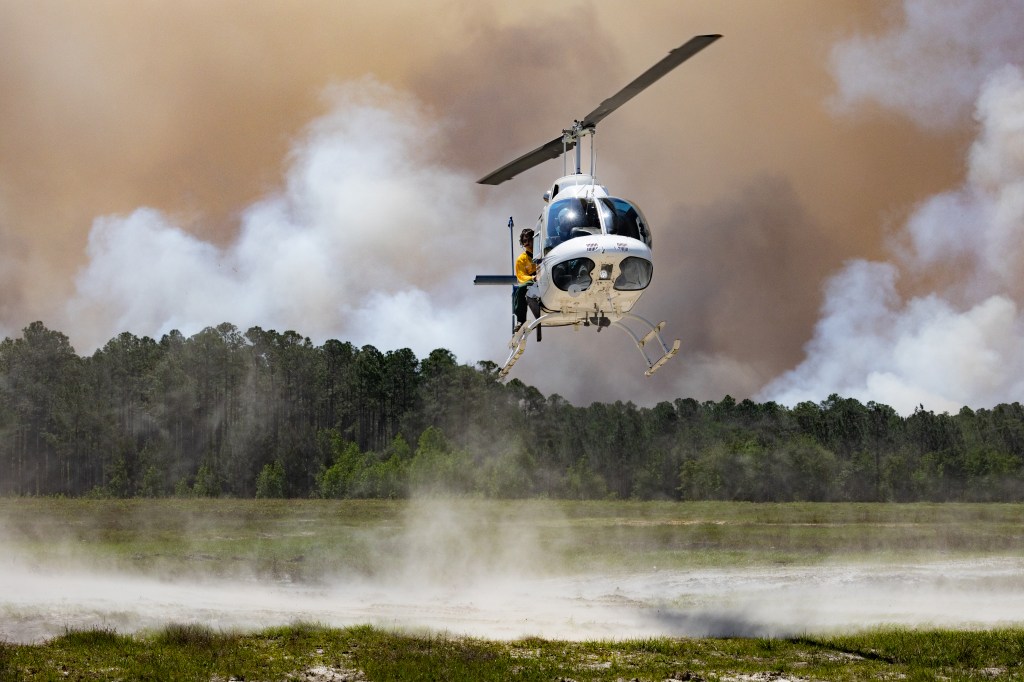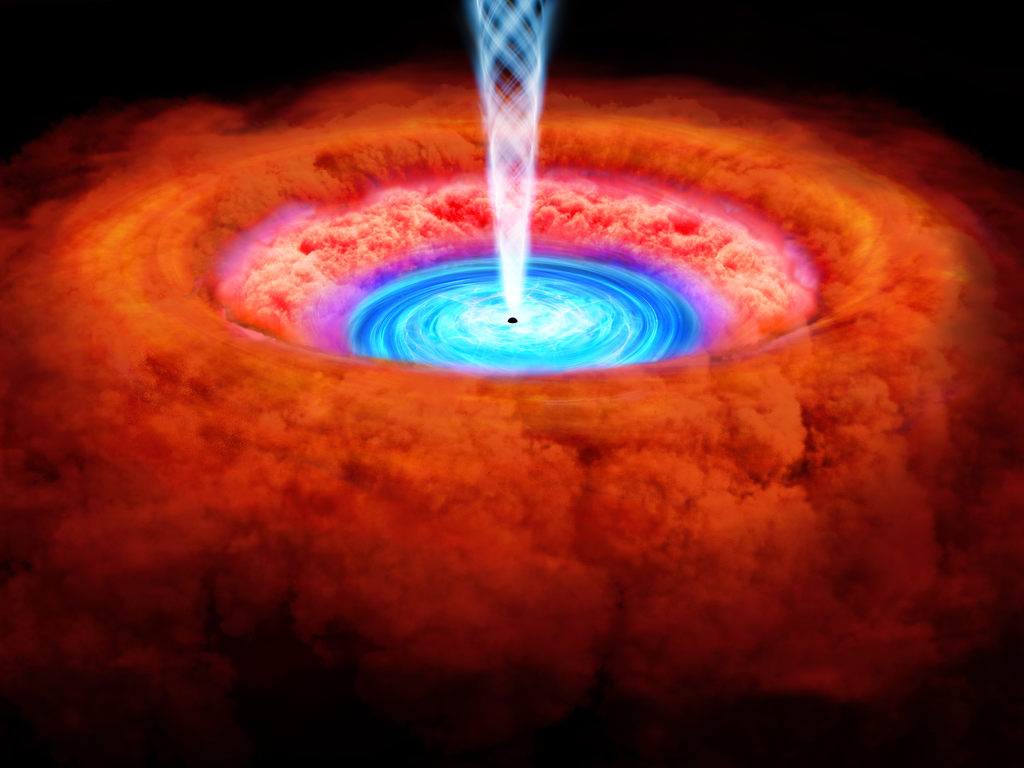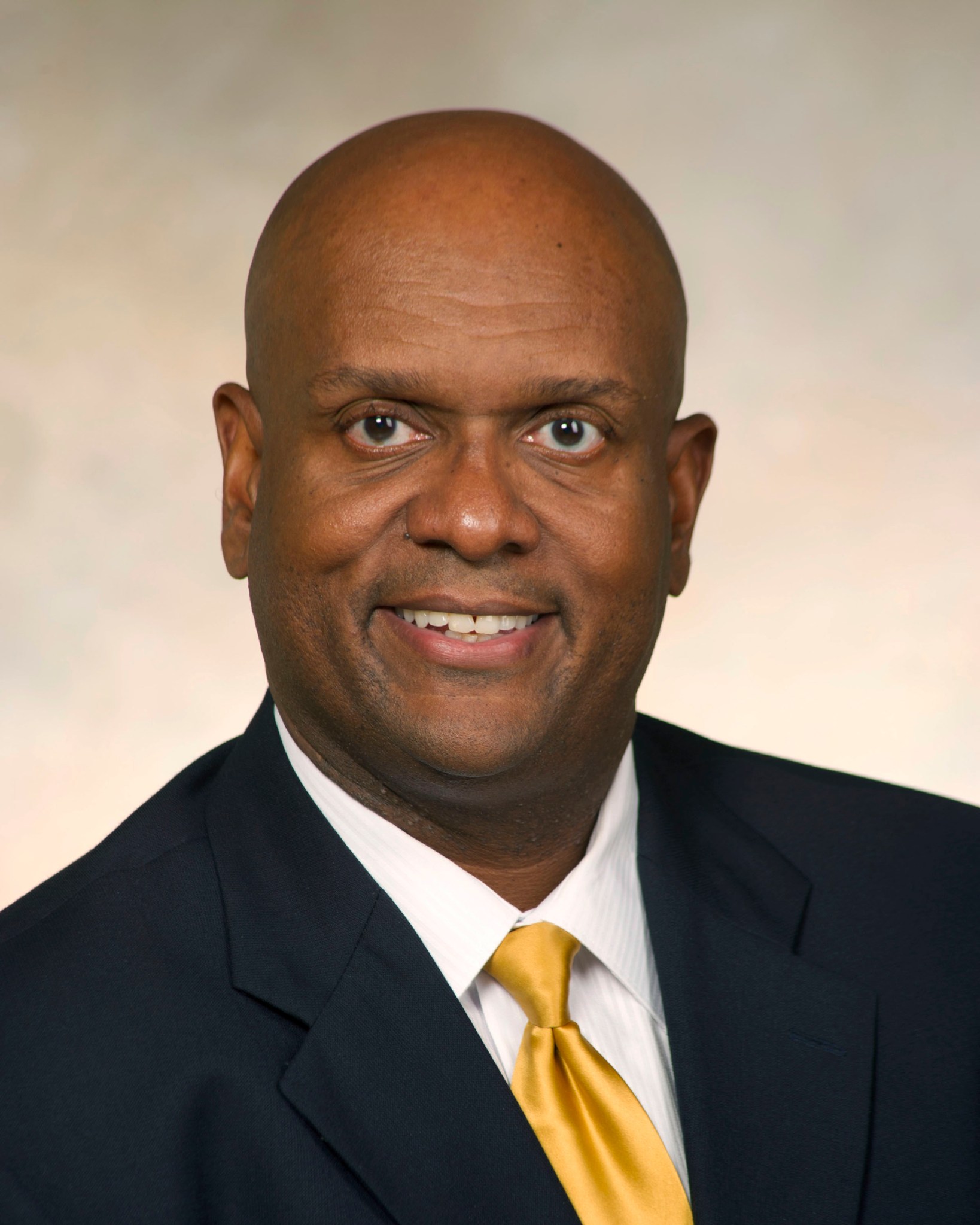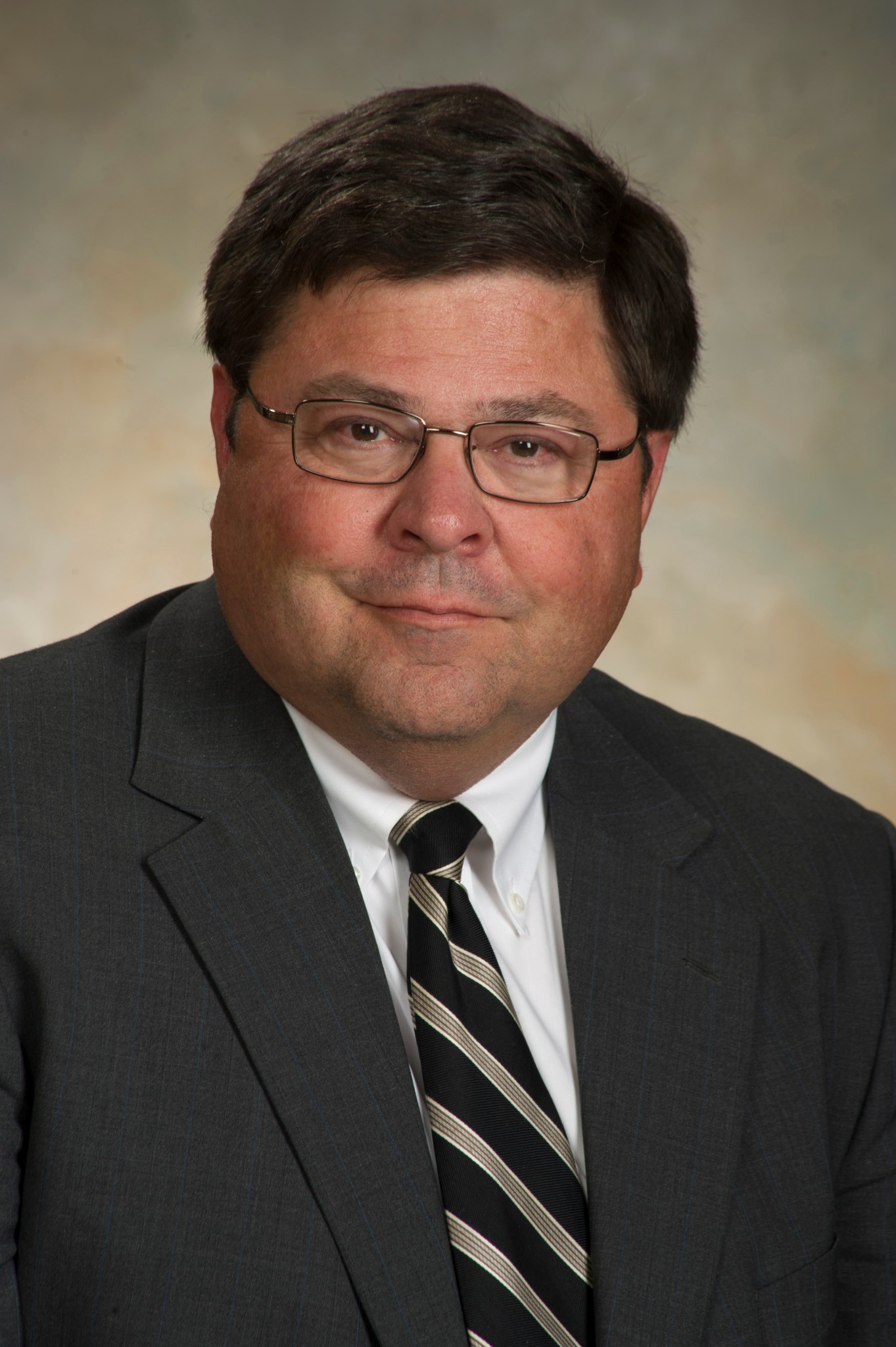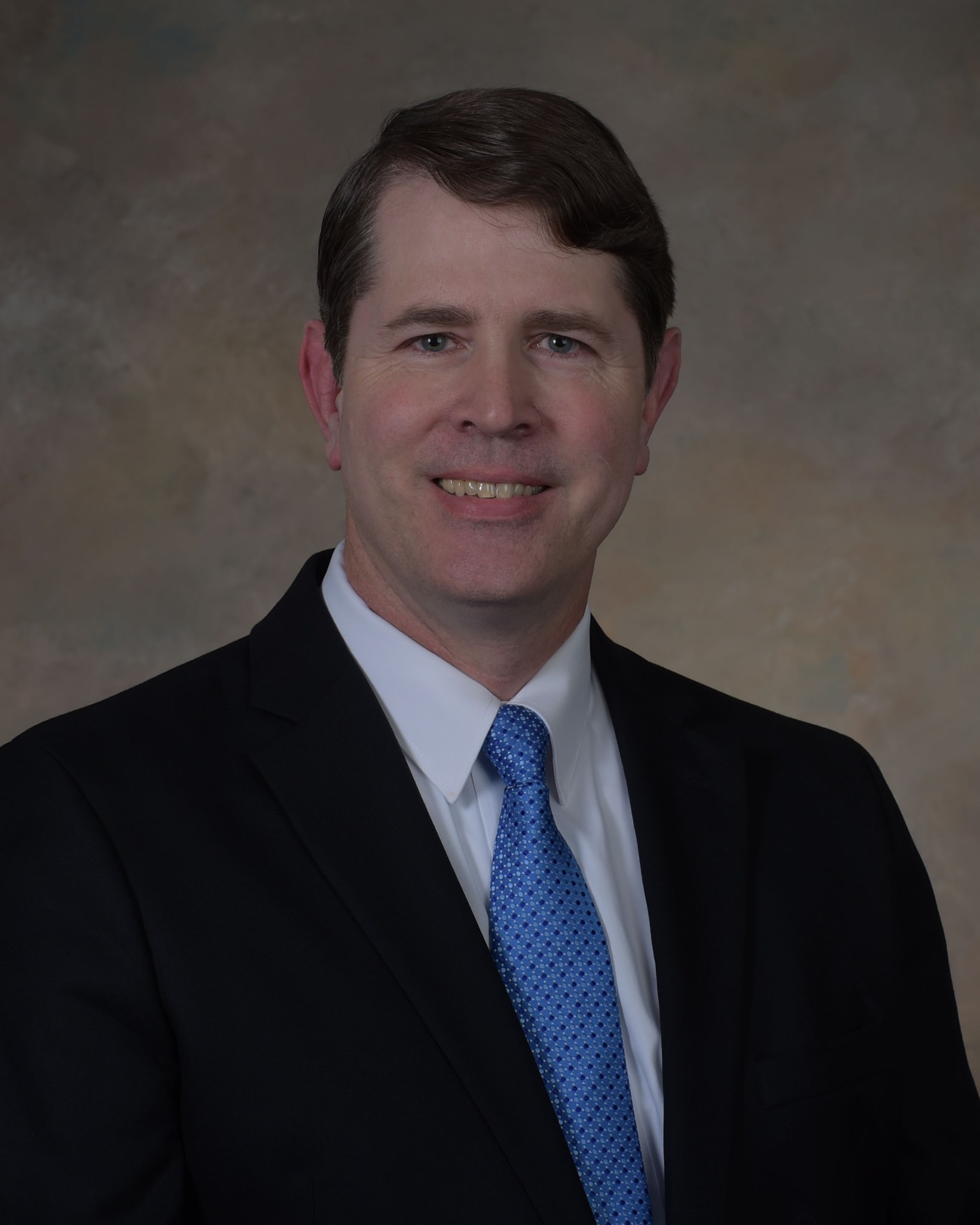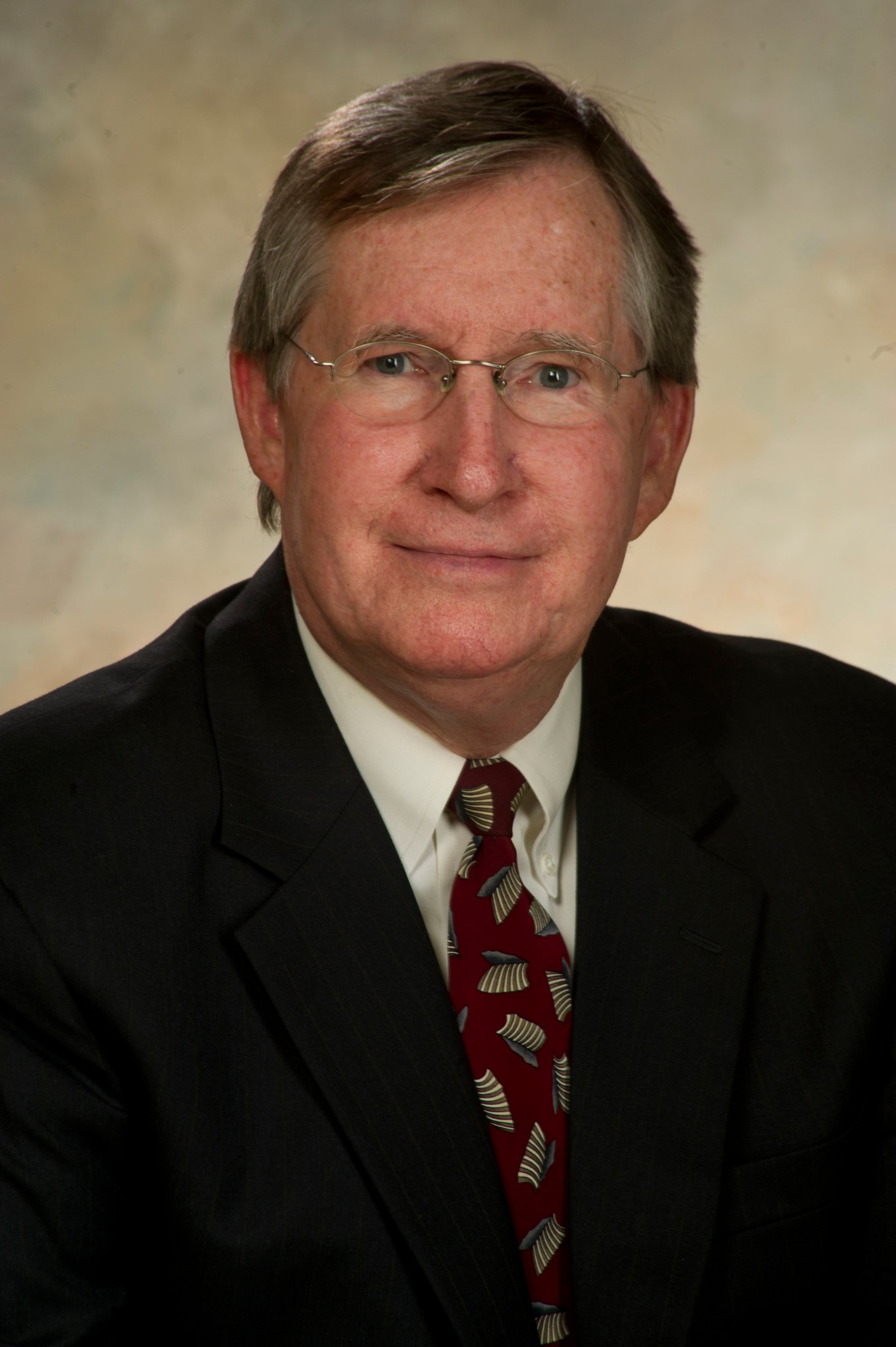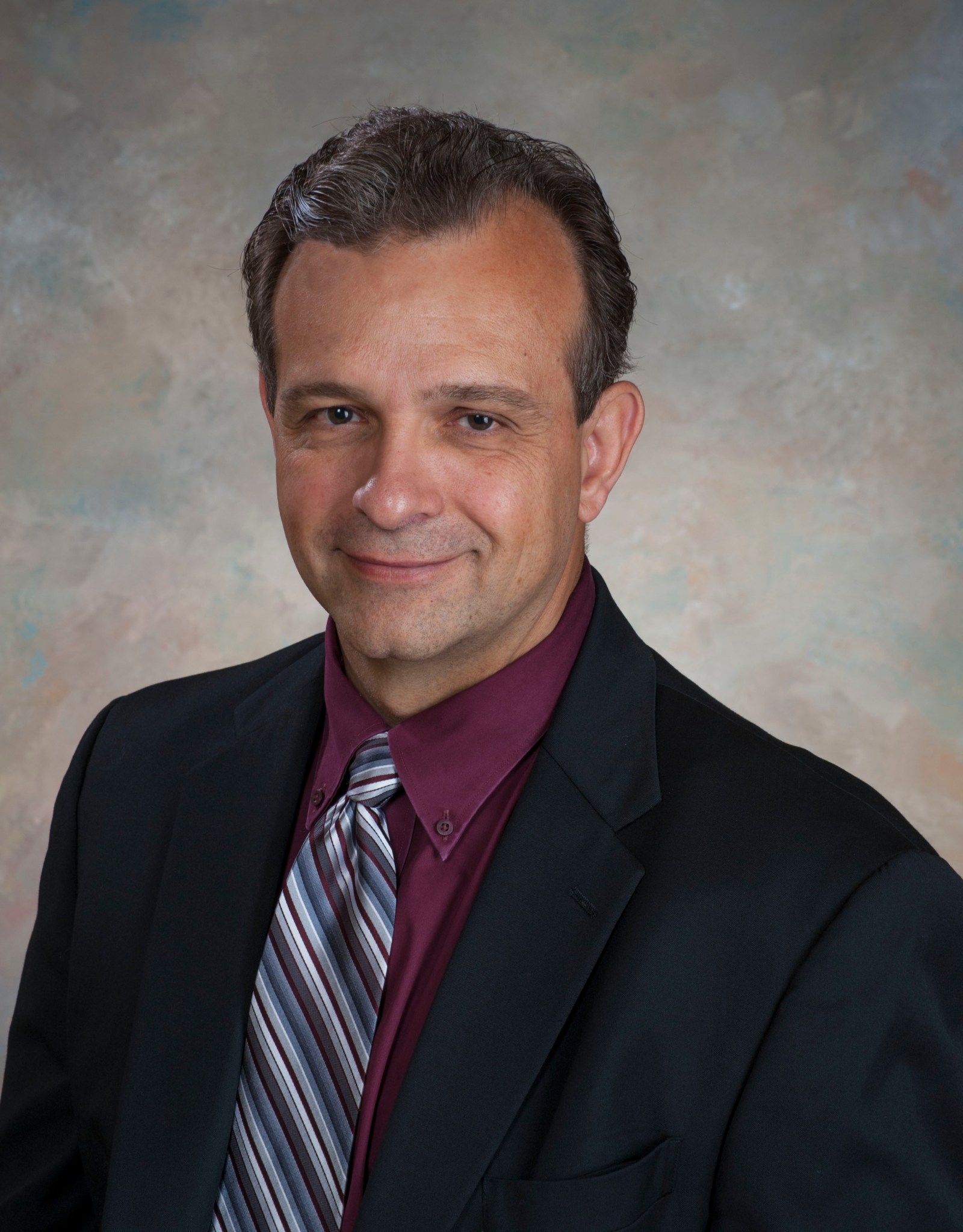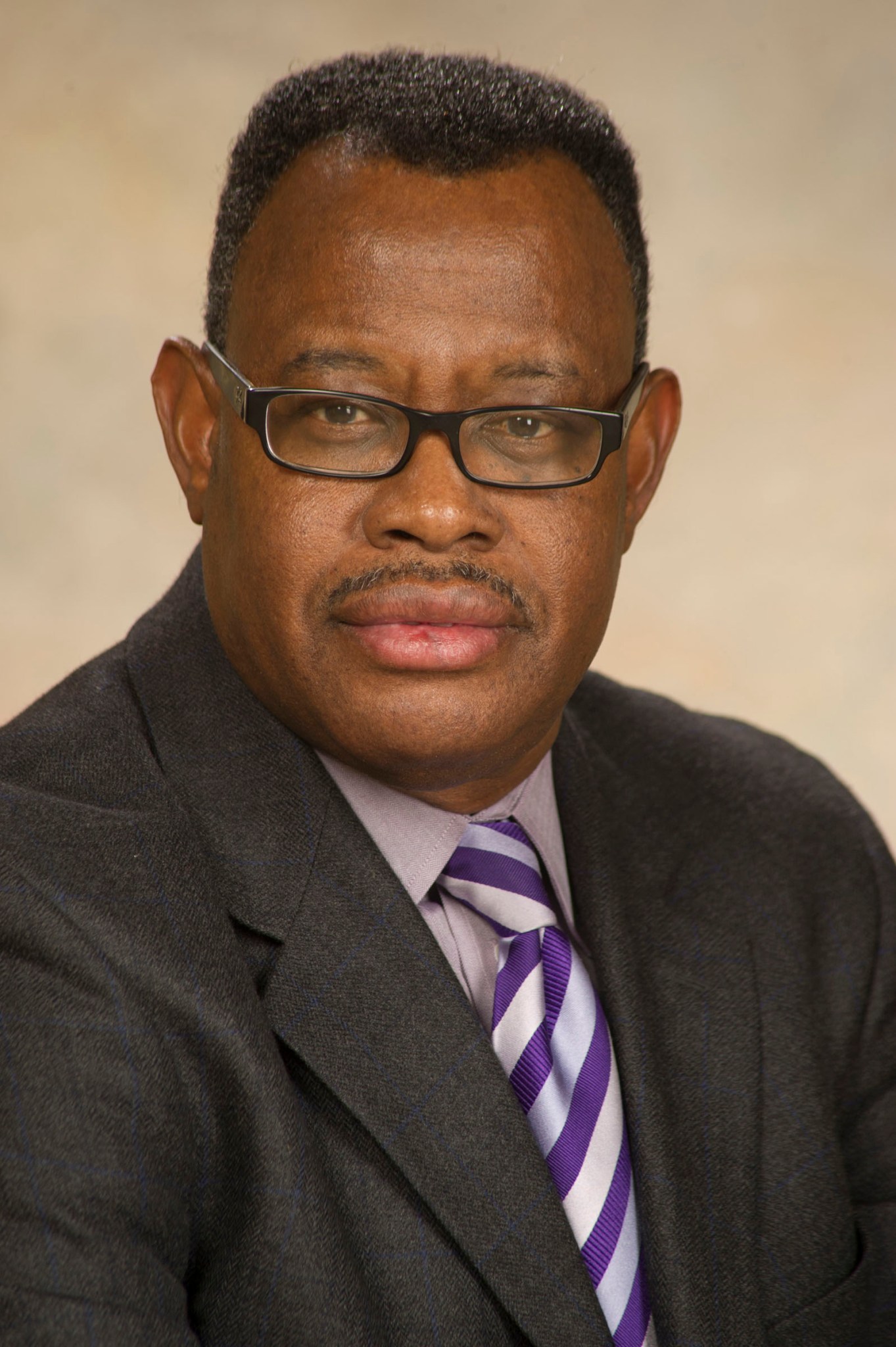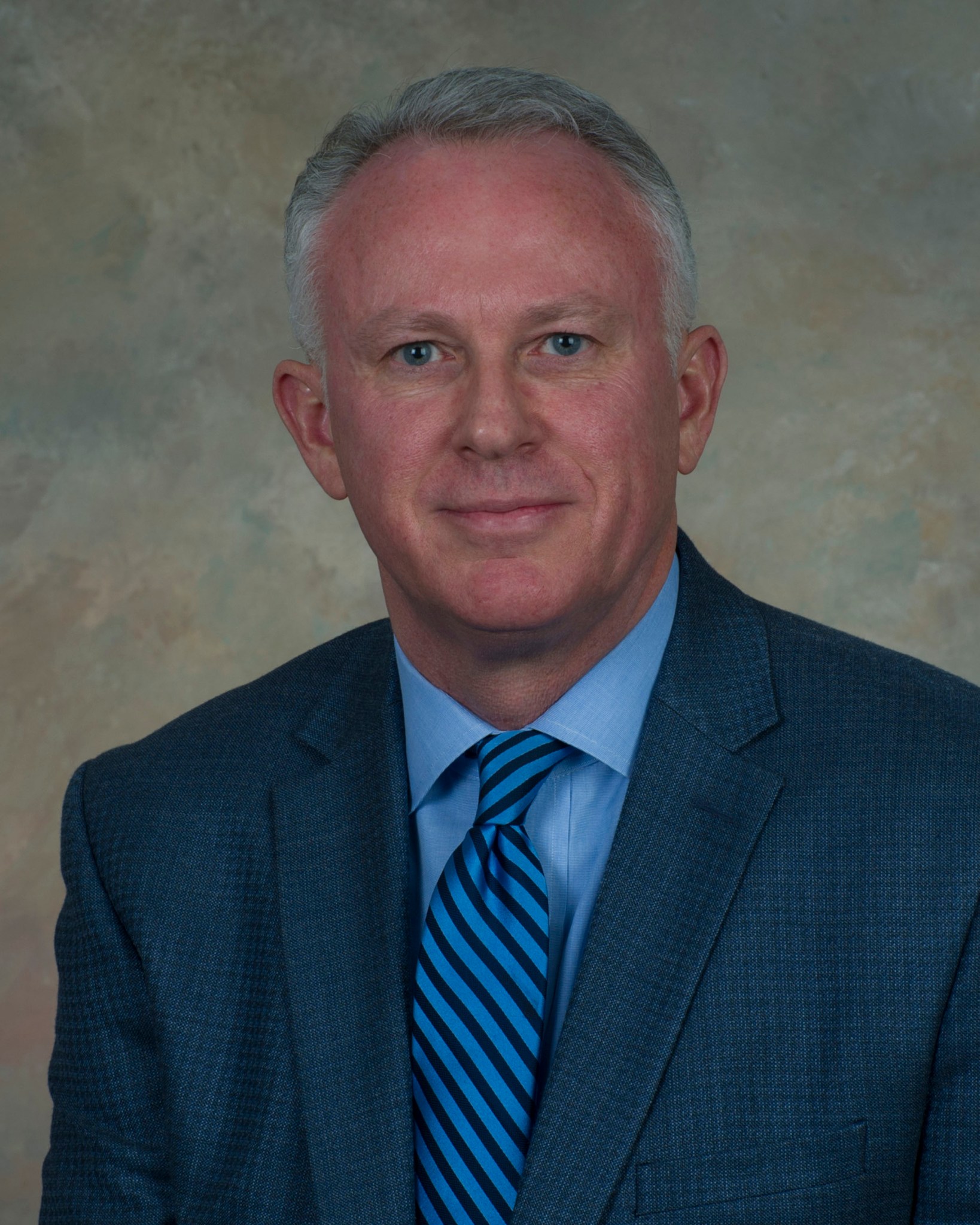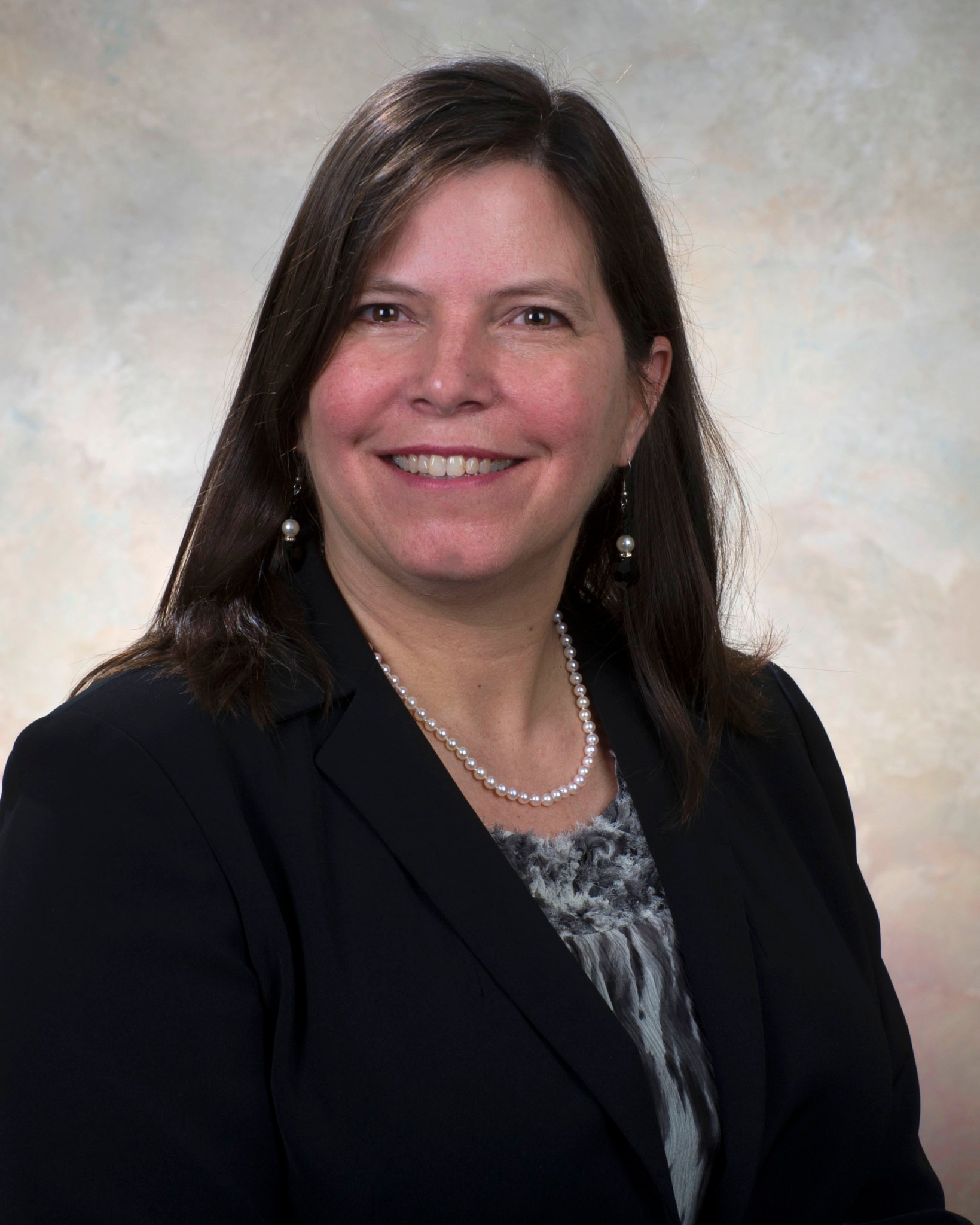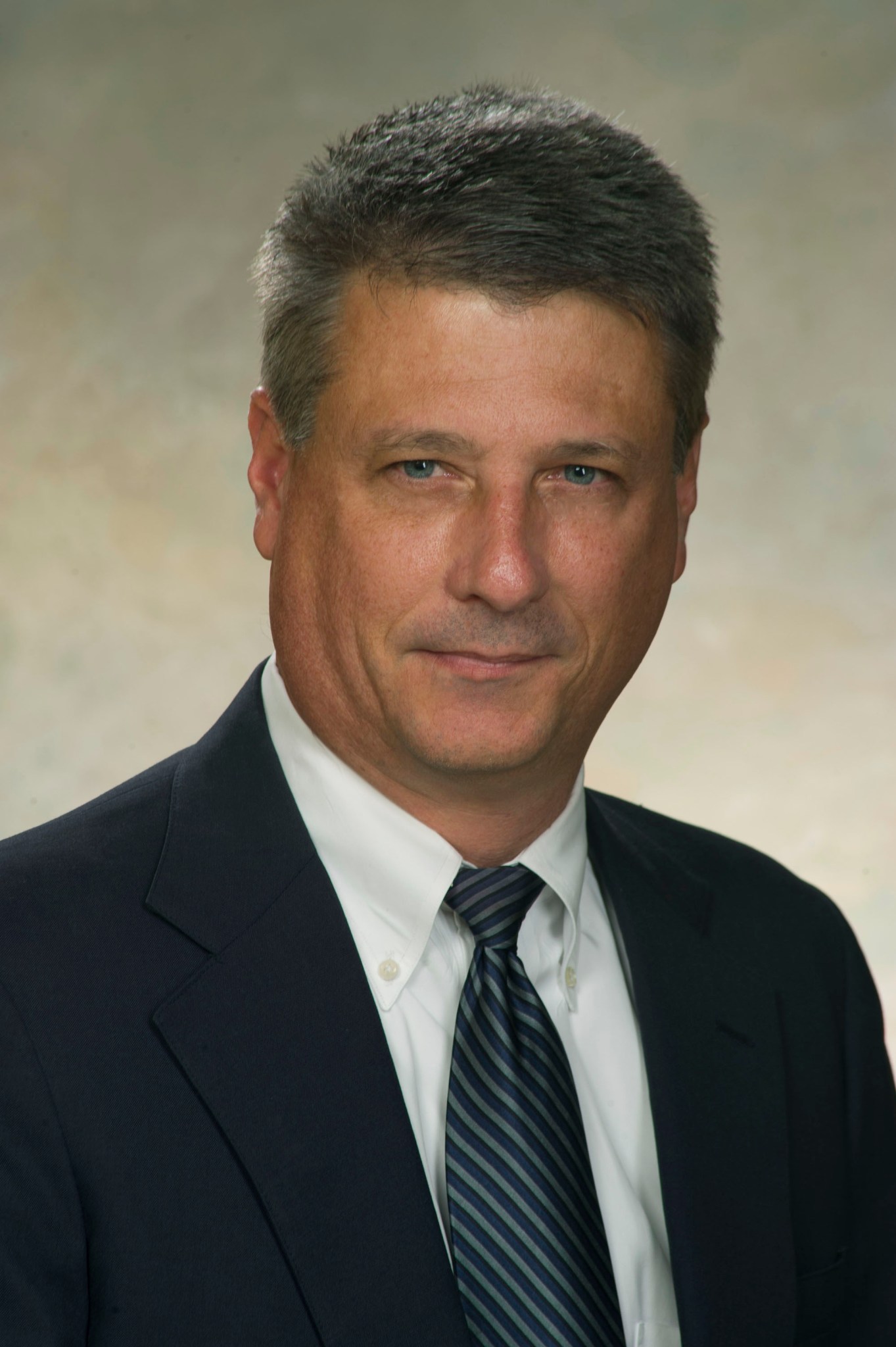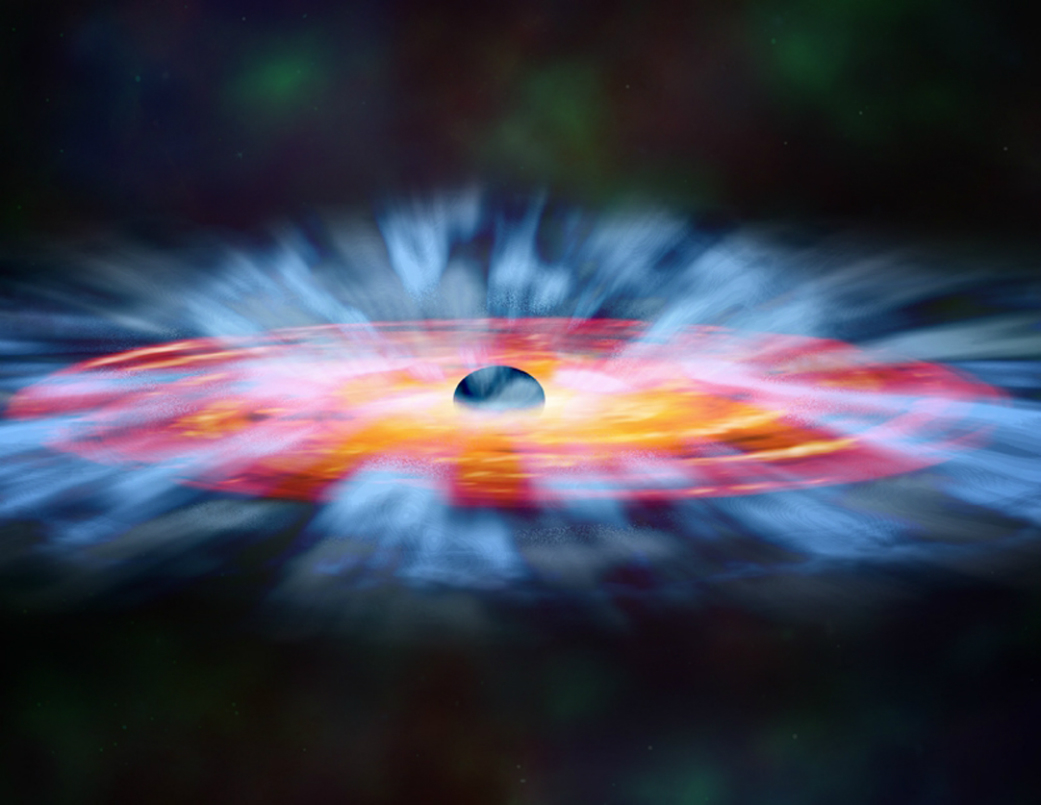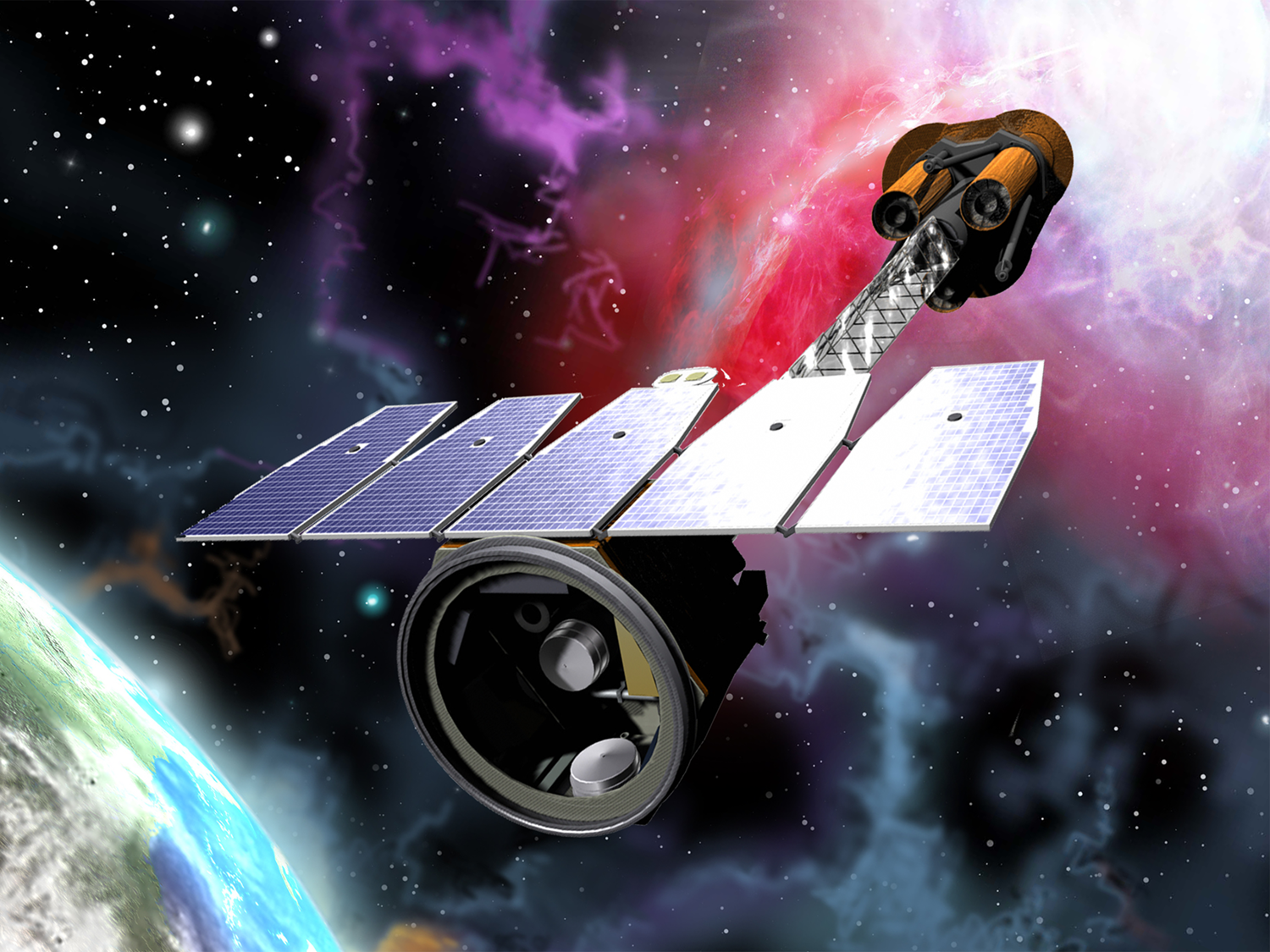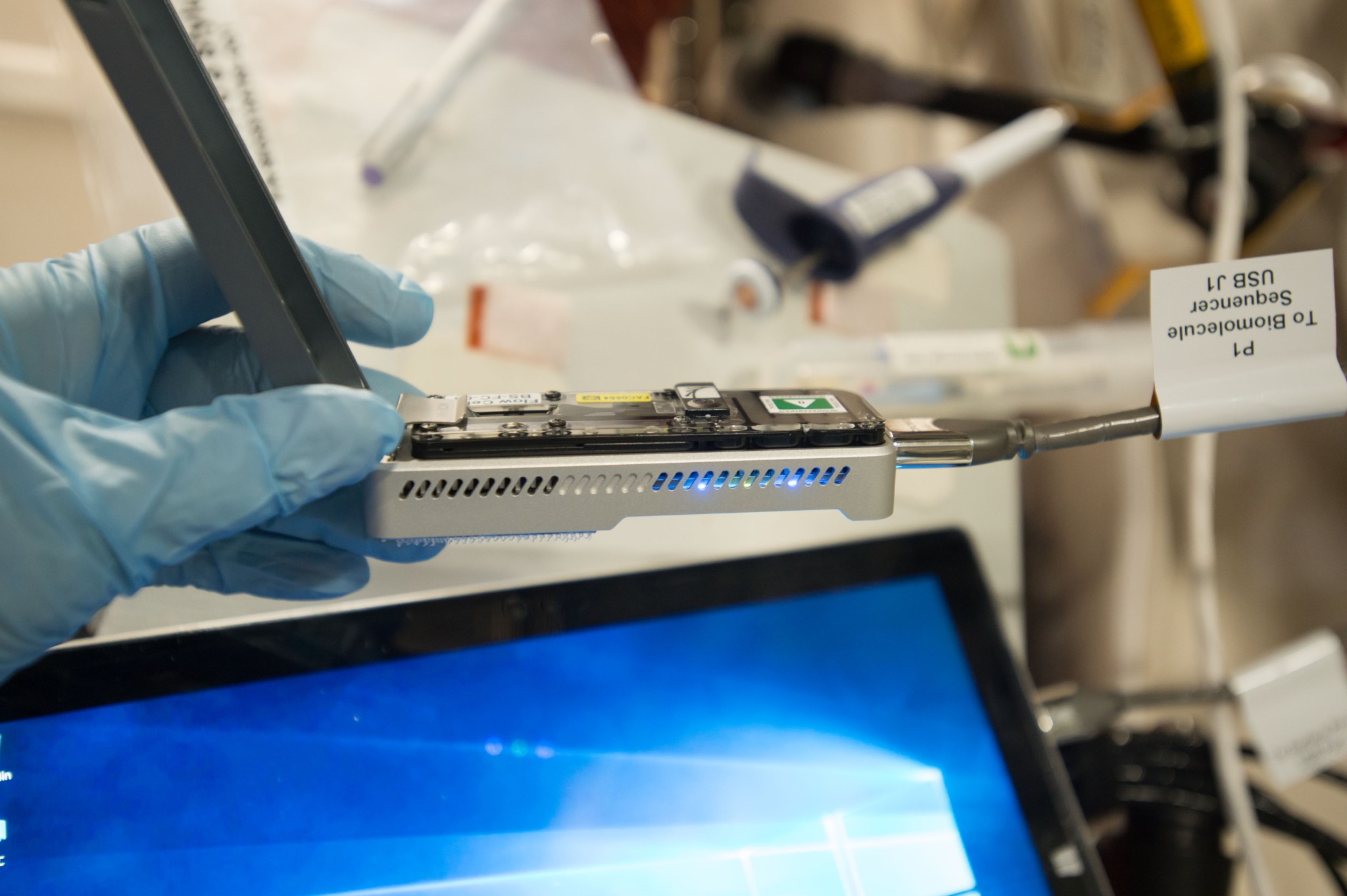In This Week’s Star
- Senior Executive Service Assignments Announced to Support Center Realignment
- Tia Ferguson Named Deputy of Marshall’s Space Systems Department
- Chris Cianciola Named SLS Chief Safety Officer
- NASA Selects Mission to Study Black Holes, Cosmic X-ray Mysteries
- Construction Complete: Stand Prepares to Test SLS’s Largest Fuel Tank
- Wind Tunnel Testing Underway for Next, More Powerful Version of SLS
- Astronauts Conduct Second Spacewalk to Upgrade Space Station Power Systems Jan. 13
- Saving Time and Lives with DNA Analysis in Space
- NASA Administrator Charles Bolden and Deputy Administrator Dava Newman Hold Farewell Town Hall Meeting
- Charles Bolden Takes Final Tour of SLS Progress as NASA Administrator During Recent Visit to Michoud
- NASA in the Park Named Downtown Huntsville Inc.’s Event of the Year
- This Week in NASA History: Saturn IB Placed in Marshall Test Stand — Jan. 18, 1965
- Obituaries
Senior Executive Service Assignments Announced to Support Center Realignment
In September 2016, NASA Marshall Space Flight Center Director Todd May announced his plan to realign the center’s organizational structure to better support the agency’s human exploration, science and technology portfolios. On Jan. 11, May announced four Senior Executive Service assignments that will serve to support the center’s realignment plans. SES is the personnel system covering top managerial positions in federal agencies.
“These changes will improve the center’s agility and efficiency, enhance our ability to engage and serve stakeholders, and ensure Marshall continues to be a center of excellence,” said May. “In early February, we will come together as a center to officially wrap up this realignment effort and increase our focus on the other pieces of the management agenda. Transition activities will begin immediately to include briefings from the new leaders to the organizations.”
Bobby Watkins has been named manager of Marshall’s new Human Exploration Development and Operations Office. Watkins returns to Marshall after serving as the director of NASA’s Michoud Assembly Facility since April 2015. A graduate of Albany State University in Albany, Georgia, he joined NASA in 1986 as a member of NASA Johnson Space Center’s Mission Operation Directorate. For Watkins’ full bio, click here.
Paul Gilbert has been named deputy manager of Marshall’s new HEDO Office. He most recently served in the same position with the Flight Programs & Partnerships Office, which is being replaced by HEDO. He joined NASA in 1990 as the deputy mission manager for the First United States Microgravity Laboratory Mission. A native of Huntsville, Gilbert earned his bachelor’s degree in mechanical engineering and from the University of Alabama in Tuscaloosa. For Gilbert’s full bio, click here.
David Burns has been named the manager of Marshall’s Science and Technology Office. Burns joined Marshall in April 2016 after eight years with the U.S. Department of Defense Missile Defense Agency, where he served as the director of Science and Technology. He holds a doctorate in electrical engineering from the Air Force Institute of Technology, a master’s degree in electrical engineering from the University of Dayton, Ohio, and a bachelor’s degree in electrical engineering from the Air Force Academy. For more information about Burns, click here.
Raymond “Corky” Clinton will serve as the deputy manager of the realigned Science and Technology Office. Clinton was named the previous Science and Technology Office’s deputy manager in 2011. He joined Marshall in 1984 as an aerospace ceramic materials engineer in the Materials and Processes Laboratory of the former Science and Engineering Directorate. Clinton earned his bachelor’s, master’s and doctoral degrees from the Georgia Institute of Technology in Atlanta. For Clinton’s full bio, click here.
To view the new charters for HEDO and S&T, click here.
In addition to the new assignments related to the center’s realignment, May announced three further changes.
Alex Priskos will manage the Space Launch System Program Office’s newly established Systems Engineering and Integration Office. Priskos earned his bachelor’s from the University of Utah in Salt Lake City and a master’s degree in business administration from Utah State University in Logan. He joined NASA in 2005 and most recently served as the manager of the SLS Boosters Office.
Lewis Wooten will serve as SLS associate program manager. In 1980, Wooten earned a master’s degree from Atlanta University in Georgia, now known as Clark Atlanta University, and joined NASA as an engineer on NASA’s Spacelab missions. He most recently served as the director of the Mission Operations Laboratory in the Payload Operations Integration Center.
Keith Hefner will replace Watkins as the director of the Michoud Assembly Facility. Hefner joined NASA in 1985 and was most recently the SLS associate program manager. He attended Snead State Community College in Boaz, Alabama, and graduated from the University of Alabama in Tuscaloosa.
For more information, visit the Director’s Corner on ExplorNet.
Tia Ferguson Named Deputy of Marshall’s Space Systems Department
Cynthia “Tia” Kaiser Ferguson has been named to the Senior Executive Service position of deputy of Space Systems Department in the Engineering Directorate at NASA’s Marshall Space Flight Center. Ferguson succeeds Dr. David Burns who was reassigned as manager of the Science and Technology Office.
The Space Systems Department is responsible for designing, developing, assembling, integrating, testing, and delivering flight, ground, prototype and development products for human spaceflight programs, science investigations and exploration initiatives.
Reporting to the Space Systems director, Ferguson will assist in the oversight of an annual budget of over $110 million and management of a diverse, highly technical workforce of approximately 560 civil service and contractor employees located in six divisions and 18 branches.
Throughout her 27 years of NASA experience, Ferguson has served in multiple technical leadership positions. She began her career in 1990 at NASA’s Kennedy Space Center as a mechanical systems engineer where she performed integration and testing of space shuttle experiments, and in 1994 was named the KSC lead project engineer for STS-66 payloads.
She transferred to Marshall in 1995 where she became the Multi-Purpose Logistics Module Cargo Element Integration Project manager. Ferguson became a mechanical design engineer in the Space Systems Department in 1999, a position she held until 2006 when she became chief of the Space Systems Department’s Structural and Mechanical Design Branch. From 2011 to 2012, she was the Engineering and Science Services and Skills Augmentation Source Evaluation Board chair. In 2012, she served in a detail as the assistant manager for the Science and Technology Office, after which she became the project manager for SERVIR, an Earth science project that helps developing countries use Earth observing satellites and geospatial technologies to manage climate risks and land use.
In 2015, Ferguson was selected for the SES Candidate Development Program. As part of this program, she completed details at NASA’s Glenn Research Center as a special assistant to the Office of the Center Director, where she created strategic messaging for internal and external center communications; at Marshall as the acting center chief technologist, where she was responsible for assuring technology activities and the technology portfolio were managed strategically for the center; and most recently at NASA Headquarters, as the special assistant to the deputy chief financial officer where she led strategic planning and coordination for the Agency Strategic Implementation Planning meeting, and participated in budget formulation and implementation efforts. Ferguson successfully completed the SES Candidate Development Program in October and was recently certified by the Office of Personnel Management.
She has completed multiple executive leadership development programs, including Harvard’s Senior Executive Fellows program in February 2016. A native of Natchez, Mississippi, Ferguson earned a bachelor’s degree in mechanical engineering from Tulane University in New Orleans, and a master’s degree in electrical engineering with minors in optics and micro-electronics from the University of Alabama in Huntsville. She is a registered Professional Engineer in the state of Alabama, and holds a U.S. Patent on a Micro-Electro-Mechanical Systems micro-translation device.
She and her husband, Jim, live in Huntsville and have two children.
Chris Cianciola Named SLS Chief Safety Officer
Chris Cianciola has been named to the Senior Executive Service position of Space Launch System chief safety officer in Safety and Mission Assurance Directorate at NASA’s Marshall Space Flight Center. As the SLS chief safety officer, he will be responsible for managing and directing the safety program and mission and product assurance activities for the SLS Program.
A 16-year NASA veteran, Cianciola has provided technical leadership for a multitude of flight programs and projects with responsibilities ranging from development to operations of human-rated space systems. Since May 2015, he has served as the International Space Station Program manager for Marshall’s payload operations, accountable directly to the ISS Program manager. As the cost account manager, he was responsible for total cost, schedule and technical implementation of the payload operations onboard the space station. This included responsibility for crew and operations training, as well as the planning, scheduling and execution of scientific and technical experiments.
In 2011, Cianciola established and managed the Exploration and Space Transportation Development Office, where he was responsible for managing Marshall’s activities in support of multiple Human Exploration and Operations Mission Directorate programs. From 2010 to 2011, he served as deputy manager of the Shuttle External Tank Project, jointly responsible for leading the final phase of operations, successful and safe completion of the Space Shuttle Program and transition to the post-shuttle period.
His Safety and Mission Assurance experience at Marshall includes serving as chief safety officer for both the Ares Projects and the Space Shuttle External Tank Project, as well as serving as a reliability and quality assurance engineer in the Reusable Solid Rocket Booster and External Tank projects.
In addition to his considerable NASA experience, Cianciola possesses extensive aerospace industry experience in safety and mission assurance, quality assurance, reliability and risk management. Prior to his NASA career, he worked in industry supporting various agency programs providing critical support to payload integration and shuttle propulsion elements.
Cianciola earned a bachelor’s degree in civil engineering from the University of Mississippi in Oxford and a master’s degree in administrative science from the University of Alabama in Huntsville. He is the recipient of numerous honors and awards, including the Silver Achievement Medal, Exceptional Achievement Medal, Space Flight Honoree Award, Director’s Commendation and Silver Snoopy.
A native of Memphis, Tennessee, Cianciola and his wife, Lanell, live in Huntsville and have two children.
NASA Selects Mission to Study Black Holes, Cosmic X-ray Mysteries
NASA has selected a science mission that will allow astronomers to explore, for the first time, the hidden details of some of the most extreme and exotic astronomical objects, such as stellar and supermassive black holes, neutron stars and pulsars.
Objects such as black holes can heat surrounding gases to more than a million degrees. The high-energy X-ray radiation from this gas can be polarized — vibrating in a particular direction. The Imaging X-ray Polarimetry Explorer, IXPE, mission will fly three space telescopes with cameras capable of measuring the polarization of these cosmic X-rays, allowing scientists to answer fundamental questions about these turbulent and extreme environments where gravitational, electric and magnetic fields are at their limits.
“We cannot directly image what’s going on near objects like black holes and neutron stars, but studying the polarization of X-rays emitted from their surrounding environments reveals the physics of these enigmatic objects,” said Paul Hertz, astrophysics division director for the Science Mission Directorate at NASA Headquarters. “NASA has a great history of launching observatories in the Astrophysics Explorers Program with new and unique observational capabilities. IXPE will open a new window on the universe for astronomers to peer through. Today, we can only guess what we will find.”
NASA’s Astrophysics Explorers Program requested proposals for new missions in September 2014. Fourteen proposals were submitted, and three mission concepts were selected for additional review by a panel of agency and external scientists. NASA determined the IXPE proposal provided the best science potential and most feasible development plan.
The mission, slated for launch in 2020, will cost $188 million. This figure includes the cost of the launch vehicle and post-launch operations and data analysis. Principal Investigator Martin Weisskopf of NASA’s Marshall Space Flight Center will lead the mission. Ball Aerospace in Broomfield, Colorado, will provide the spacecraft and mission integration. The Italian Space Agency will contribute the polarization sensitive X-ray detectors, which were developed in Italy.
NASA’s Explorers Program provides frequent, low-cost access to space using principal investigator-led space science investigations relevant to the agency’s astrophysics and heliophysics programs. The program has launched more than 90 missions, including Explorer 1 in 1958, which discovered the Van Allen radiation belts around Earth, and the Cosmic Background Explorer mission, which led to a Nobel Prize. NASA’s Goddard Space Flight Center manages the Explorers Program for the agency’s Science Mission Directorate.
For more information about the Explorers program, click here.
Construction Complete: Stand Prepares to Test SLS’s Largest Fuel Tank
By Kenneth Kesner
Major construction is complete on NASA’s largest new Space Launch System structural test stand, and engineers are now installing equipment needed to test the rocket’s biggest fuel tank. The stand is critical for ensuring SLS’s liquid hydrogen tank can withstand the extreme forces of launch and ascent on its first flight, and later on the second flight, which will carry up to four astronauts in the Orion spacecraft on a journey around the moon, into the deep-space proving ground for the technology needed for the journey to Mars.
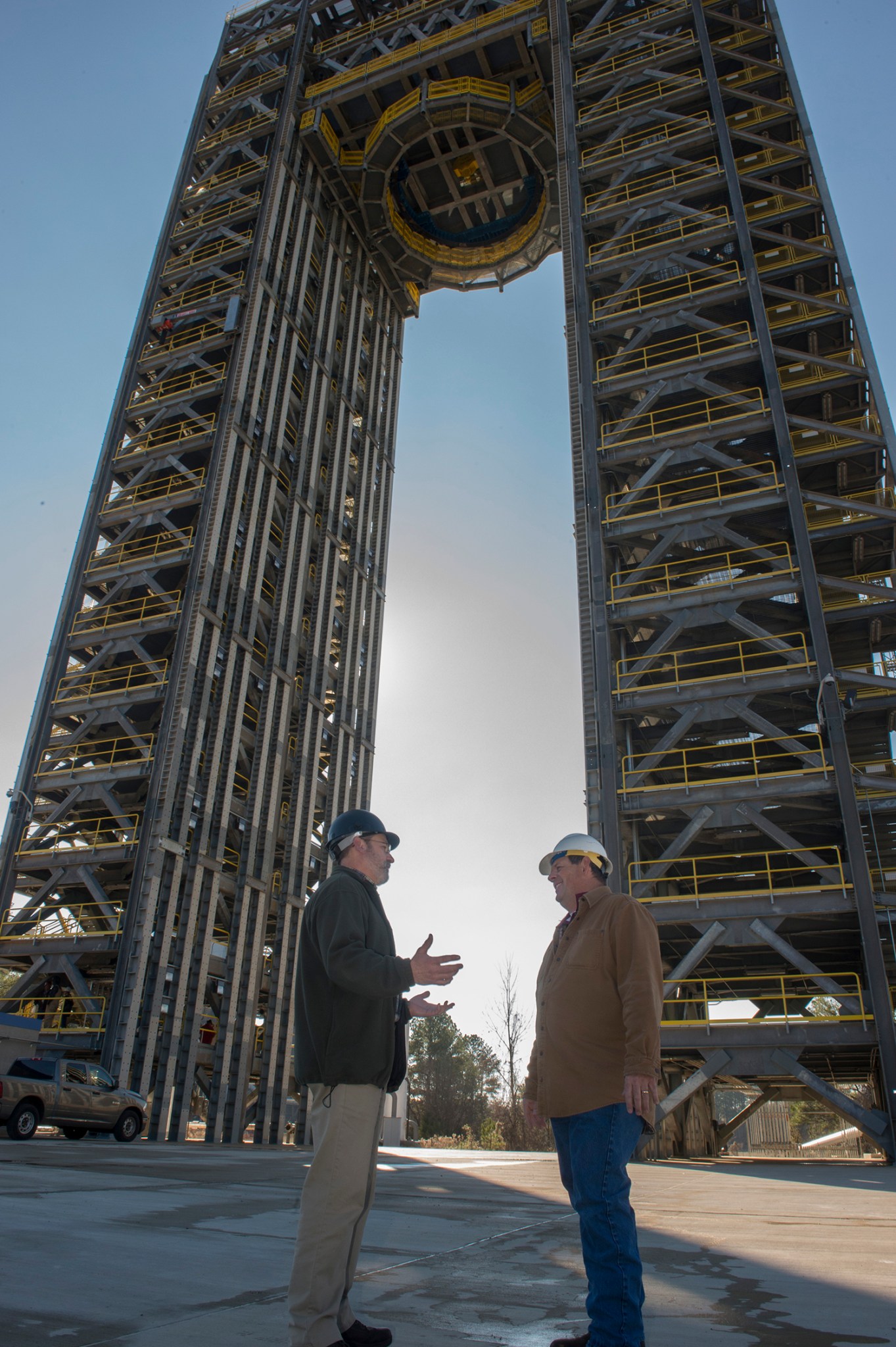
“There is no other facility that can handle something as big as the SLS hydrogen tank,” said Sam Stephens, an SLS engineer working on the tests at NASA’s Marshall Space Flight Center. “There are few places in the world like NASA’s Michoud Assembly Facility that could build these things, and even fewer that can test them.”
After the project began in May 2014, Test Stand 4693 changed the skyline of Marshall as its twin towers soared to 221 feet. In December, contractors and steelworkers handed the stand over to Marshall engineers, who are now busy installing complex networks of cables, pipes, valves, control systems, cameras, lighting and specially designed test equipment.
“The scale and capability of this test stand are unique, and creating it has taken people from across the country, from all walks of life — concrete suppliers and finishers, steel fabricators and erectors, bolt manufacturers and more,” said Robert Bobo, who manages SLS structural strength testing at Marshall. “Everyone who’s touching this is proud of the SLS, an American rocket that will send astronauts farther in space than humans have ever traveled before.”
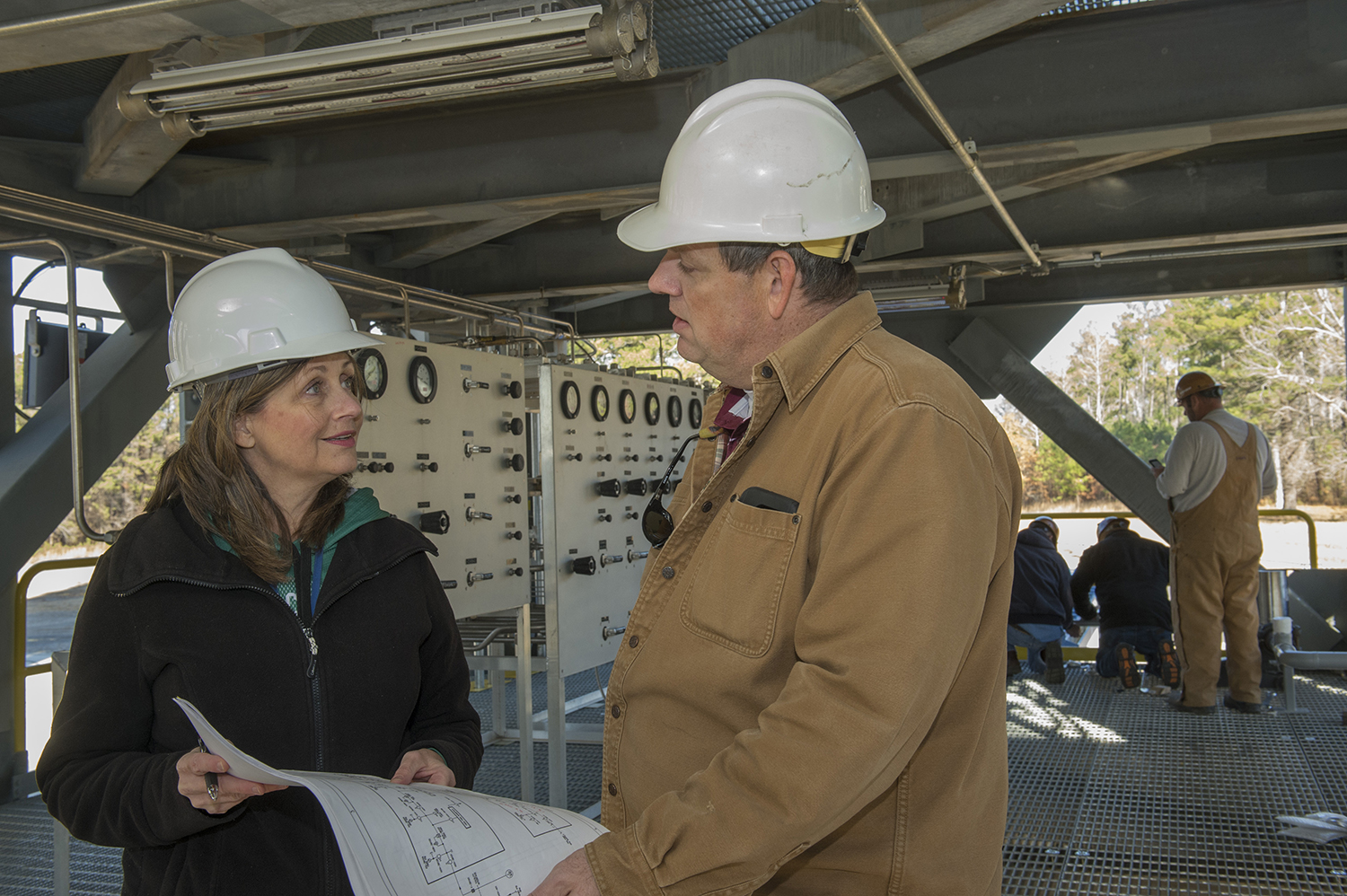
The stand will simulate the powerful dynamics of launch and flight by pushing, pulling and bending the SLS liquid hydrogen qualification test article, recently constructed by Boeing at Michoud. The 149-foot-long test article consists of a liquid hydrogen tank and equipment attached at each end to simulate the other parts of the 212-foot-long core stage, the backbone of the rocket. Together, the SLS liquid hydrogen and liquid oxygen tanks will feed 733,000 gallons of super-cooled propellant to four RS-25 engines, producing a total of 2 million pounds of thrust at the base of the core stage.
The liquid hydrogen tank test article will travel by barge from Michoud to Marshall. When testing begins, the tank test article will be positioned between the towers, suspended beneath a crosshead. A total of 38 hydraulic cylinders or “loadlines,” each weighing from 500 to 3,200 pounds will be individually calibrated, outfitted with custom-built test cells to send and receive instructions and data, and then positioned at points all along the tank. At the base, 24 of the largest cylinders — 3,200 pounds each, about as heavy as a medium-sized car — will simulate the thrust produced by the RS-25 engines.
During testing, the cylinders extend and retract, pushing and pulling in different combinations against the test article, the test stand base and towers, applying millions of pounds of pulling and crushing force and up to 340,000 pounds of shearing or sideways force. During 30 or more test scenarios, instrumentation will capture more than 3,500 strain and detection measurements, temperatures, pressures, high-definition images and other information.
Nearby, similar preparations have been underway since September 2016 on Test Stand 4697, where the SLS’s 70-foot-tall liquid oxygen tank test article will be anchored in the crook of the L-shaped stand’s arms. Because it takes some time for the cryogenic tanks to be brought to the precise temperatures and pressures required, teams also are preparing for some round-the-clock test sessions. A tank’s complete test series might take up to four months.
Kesner, an ASRC Federal/Analytical Services employee, supports the Office of Strategic Analysis & Communications.
Wind Tunnel Testing Underway for Next, More Powerful Version of SLS
By Kenneth Kesner
As engines are fired, software written and hardware welded to prepare for the first flight of NASA’s Space Launch System, engineers are already running tests in supersonic wind tunnels to develop the next, more powerful version of the world’s most advanced launch vehicle capable of carrying humans to deep-space destinations.
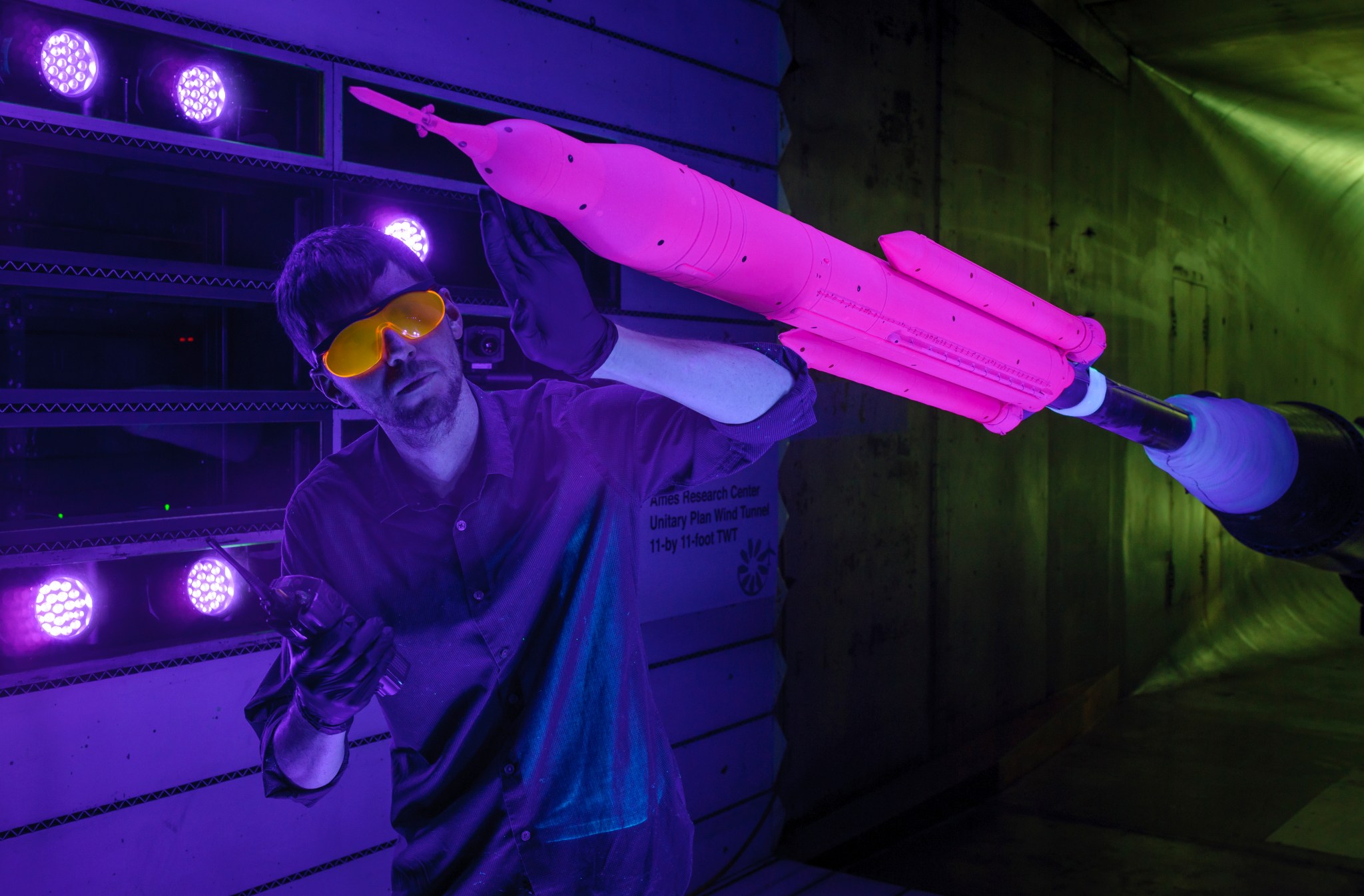
“Aeronautics leads the way in the design of a new rocket,” said Jeff Bland, SLS discipline lead engineer for Integrated Vehicle Structures & Environments at NASA’s Marshall Space Flight Center. “The first leg of any journey for spacecraft launched from Earth is a flight through our atmosphere.”
Manufacturing is well underway on the initial configuration of SLS. It is 322 feet tall and able to lift 70 metric tons (77 tons). For the first test flight of SLS, the rocket will carry an uncrewed Orion spacecraft beyond the moon and then return to Earth, deploying 13 small science and technology satellites in deep space during the journey.
The new wind tunnel tests are for the second generation of SLS. It will deliver a 105-metric-ton (115-ton) lift capacity and will be 364 feet tall in the crew configuration — taller than the Saturn V that launched astronauts on missions to the moon. The rocket’s core stage will be the same, but the newer rocket will feature a powerful exploration upper stage. On SLS’s second flight with Orion, the rocket will carry up to four astronauts on a mission around the moon, in the deep-space proving ground for the technologies and capabilities needed on NASA’s Journey to Mars.
Scale models of the upgraded rocket in crew and cargo configurations are being carefully positioned in wind tunnels for test programs to obtain data needed to refine the design of the rocket and its guidance and control systems, said John Blevins, SLS lead engineer for aerodynamics and acoustics at Marshall. During hundreds of test runs at NASA’s Langley Research Center and Ames Research Center, engineers are measuring the forces and loads that air induces on the launch vehicle during every phase of its mission.
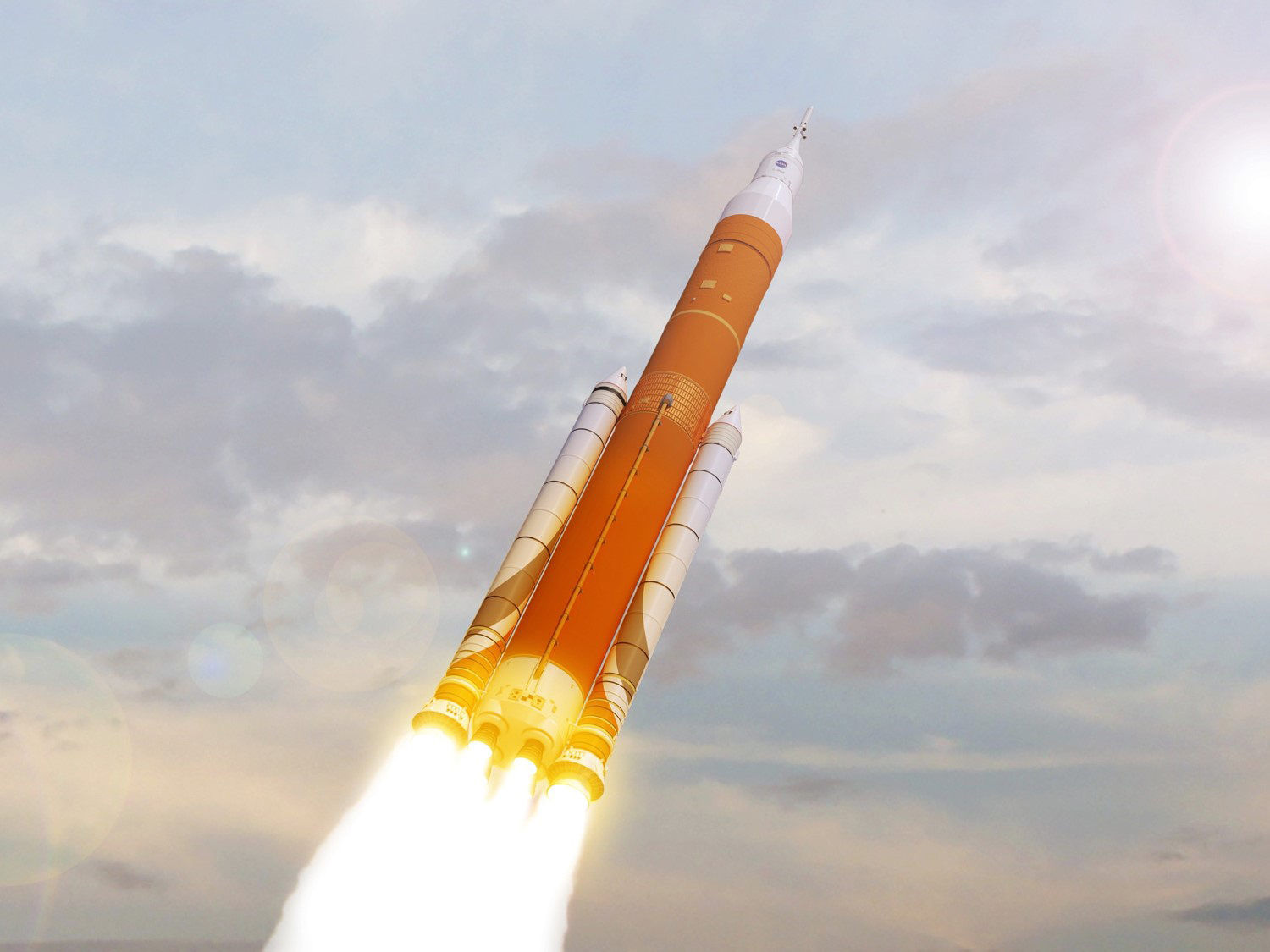
“All the critical aerodynamic environments, from when the upgraded rocket leaves the Vehicle Assembly Building at Cape Canaveral to launch, acceleration through the sound barrier and booster separation at greater than Mach 4 are evaluated in these four tests,” Blevins said.
Ascent tests completed at Ames in November determined the rocket’s behavior as it climbs after launch, and the kind of instructions to be programmed into the rocket flight computer for guidance and control as the rocket passes through transonic flight. Buffet testing at Langley in November focused primarily on how the cargo version of the upgraded rocket behaves as it moves through the atmosphere at just below the speed of sound, approaching about 800 miles per hour, then moves into supersonic flight.
The cargo version of the upgraded rocket has a smooth fairing above the exploration upper stage instead of the Orion spacecraft and launch abort system, so separate wind tunnel testing is needed. Similar tests planned for the fall 2017 at Langley will include observing this transonic shock oscillation and buffeting on the crew version of the rocket.
Two other test series are planned at Langley. The first in early 2017 will provide data to ensure that as the SLS’s two solid rocket boosters separate from the rocket during ascent, they don’t come back into contact with the vehicle. Next will be liftoff transition testing, scheduled in the summer. These tests will include evaluation of the effects of winds on the rocket as it is waiting on the pad, and the presence of the mobile launcher and tower during liftoff.
“We expect that at the end of this test series we will have all the aerodynamic flight data needed for the upgraded rocket,” he said. “We’ll be ready for the first flight with crew, targeted as early as 2021, and subsequent flights.”
Kesner, an ASRC Federal/Analytical Services employee, supports the Office of Strategic Analysis & Communications.
Astronauts Conduct Second Spacewalk to Upgrade Space Station Power Systems Jan. 13
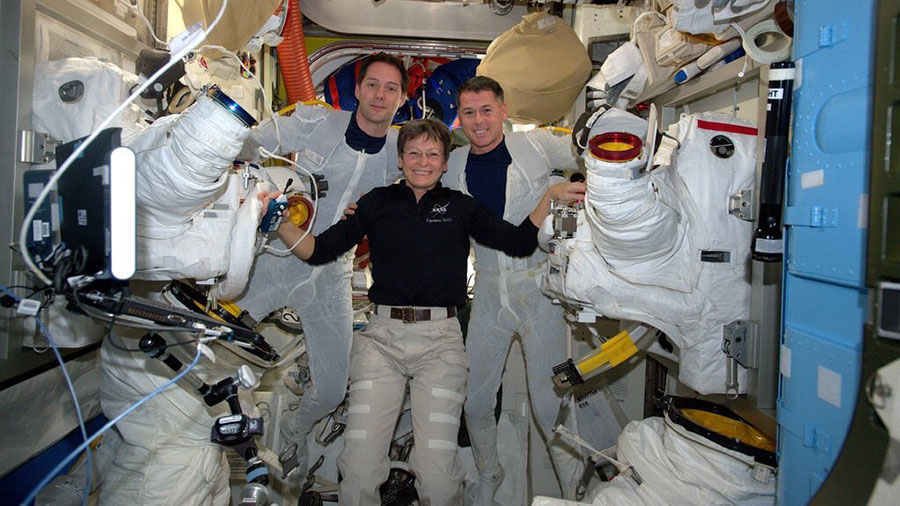
Expedition 50 astronauts Shane Kimbrough, right, of NASA, and Thomas Pesquet, left, of the European Space Agency, prep to conduct their mission’s second spacewalk to perform a complex upgrade to the International Space Station’s power system Jan. 13. The spacewalk was scheduled to install adapter plates and hook up electrical connections for six new lithium-ion batteries delivered in December 2016, wrapping up power maintenance work. Kimbrough and NASA astronaut Peggy Whitson, center, started the upgrade Jan. 6 during a six-hour spacewalk. (NASA)
Saving Time and Lives with DNA Analysis in Space
The International Space Station is a round-the-clock orbiting laboratory working on the discoveries that improve life on Earth while enabling future space travel. A ground-breaking investigation into DNA research completed this week could speed up diagnosis of diseases and analysis of organisms in space.
NASA astronaut Peggy Whitson coordinated the final run of the station’s Biomolecule Sequencer, a device that could allow crew members to sequence DNA for various experiments in space. DNA sequencing is typically difficult and time-consuming and requires bulky and expensive equipment. This investigation tests a miniature sequencer in space to diagnose infectious diseases, identify microbes and better understand the genetic changes experienced by astronauts while in space. This investigation seeks to be the first to map DNA in orbit.
If the device proves successful, organisms with a short life span would not need to be frozen and returned to a lab on Earth for analysis. Those samples could be examined on the station immediately after being collected, transmitting the data back to the ground, saving valuable research time. The real-time collection of genomic data would greatly improve scientific research in orbit. The small size of the Biomolecule Sequencer, approximately the size of a deck of playing cards, could also help doctors save lives in remote countries with minimal resources.
NASA Administrator Charles Bolden and Deputy Administrator Dava Newman Hold Farewell Town Hall Meeting
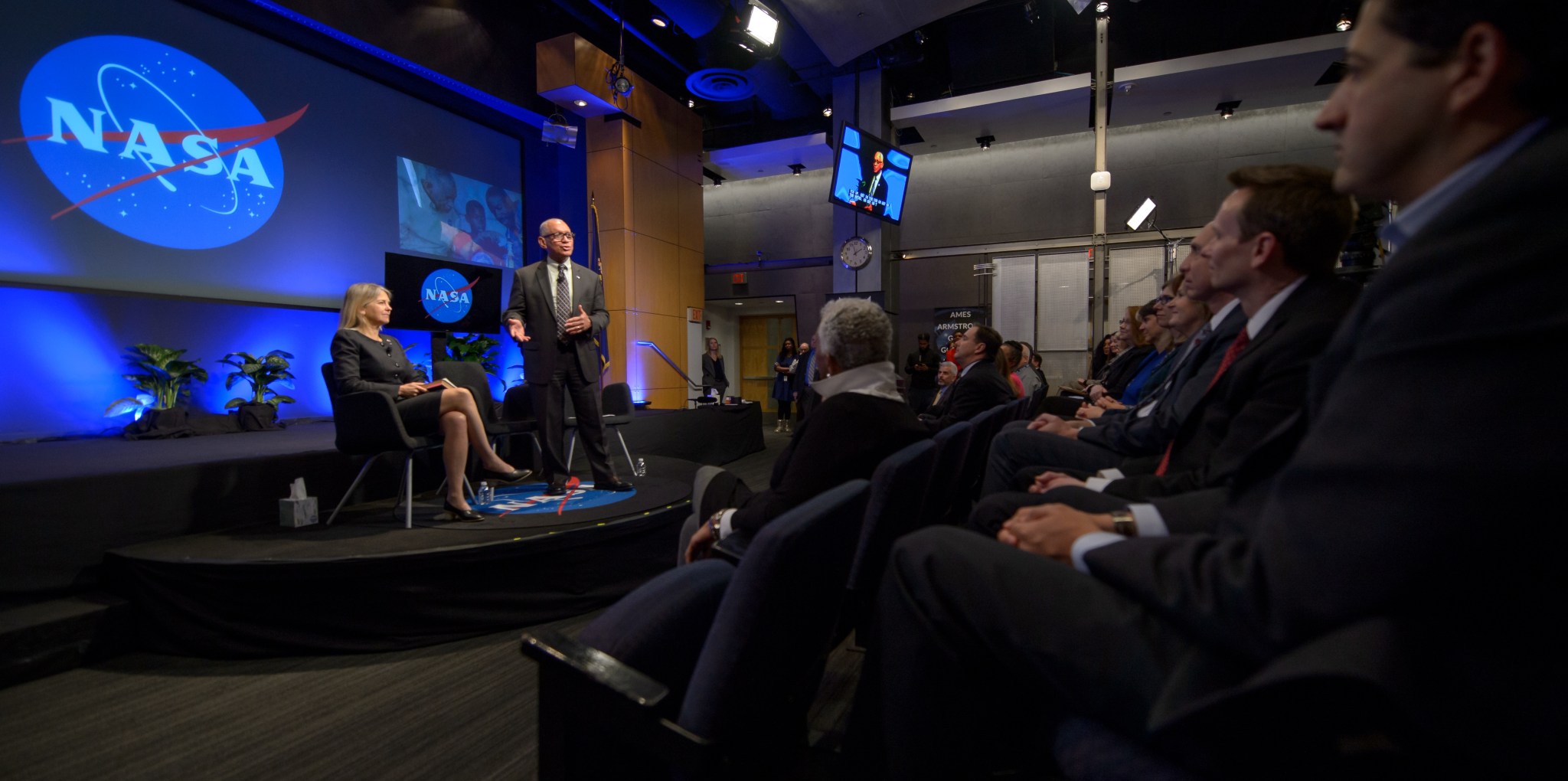
NASA Administrator Charles Bolden, standing, and Deputy Administrator Dava Newman, left, address employees at NASA Headquarters during their Farewell Town Hall Jan. 12. The two presidential appointees will end their tenures with the nation’s space agency Jan. 20. Bolden plans to retire, and Newman will return to the Massachusetts Institute of Technology in Cambridge where she is the Apollo Professor of Astronautics. The event was broadcast agency wide on DesktopTV, with viewing events at many centers. At NASA’s Marshall Space Flight Center, Marshall Deputy Director Jody Singer introduced the live broadcast in Morris Auditorium, noted new leadership appointments and previewed an upcoming all-hands where Marshall Center Director Todd May will discuss the center’s realignment. (NASA/Bill Ingalls)
Charles Bolden Takes Final Tour of SLS Progress as NASA Administrator During Recent Visit to Michoud
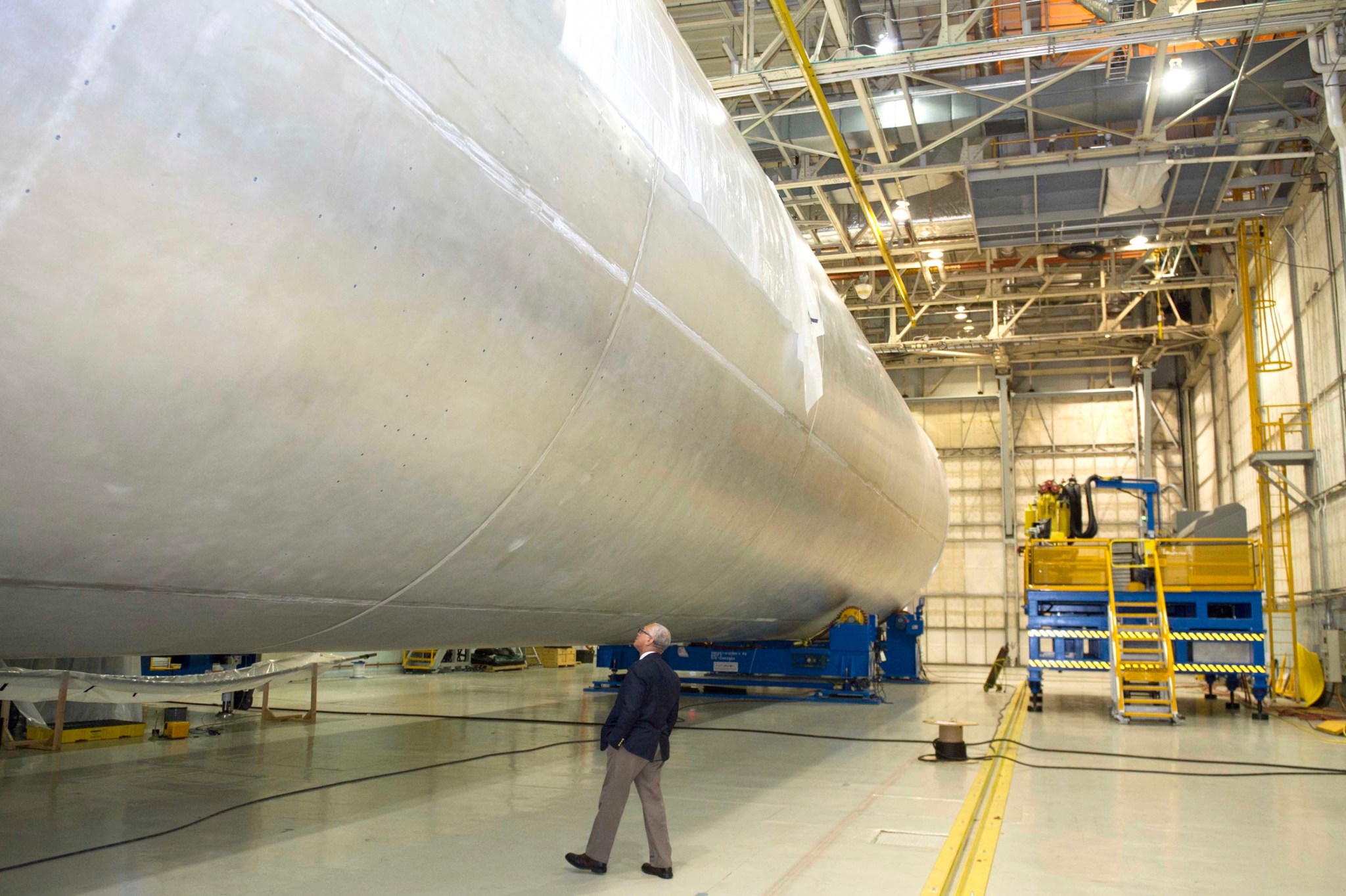
NASA Administrator Charles Bolden takes a walk around the huge liquid hydrogen tank of NASA’s Space Launch System under construction at NASA’s Michoud Assembly Facility during a visit on Jan. 6. For Bolden, it marked a final tour of Michoud’s work on the world’s most powerful rocket and the Orion spacecraft before his eight-year tenure as administrator ends on Jan. 20. At more than 130 feet long, the tank is the largest NASA has ever built for a rocket. Bolden also visited NASA’s nearby Stennis Space Center, where the liquid hydrogen tank and liquid oxygen tank will feed a total of 733,000 gallons of super-cooled propellant to four RS-25 rocket engines during SLS core stage testing and, ultimately, flight. (NASA/MAF)
NASA in the Park Named Downtown Huntsville Inc.’s Event of the Year
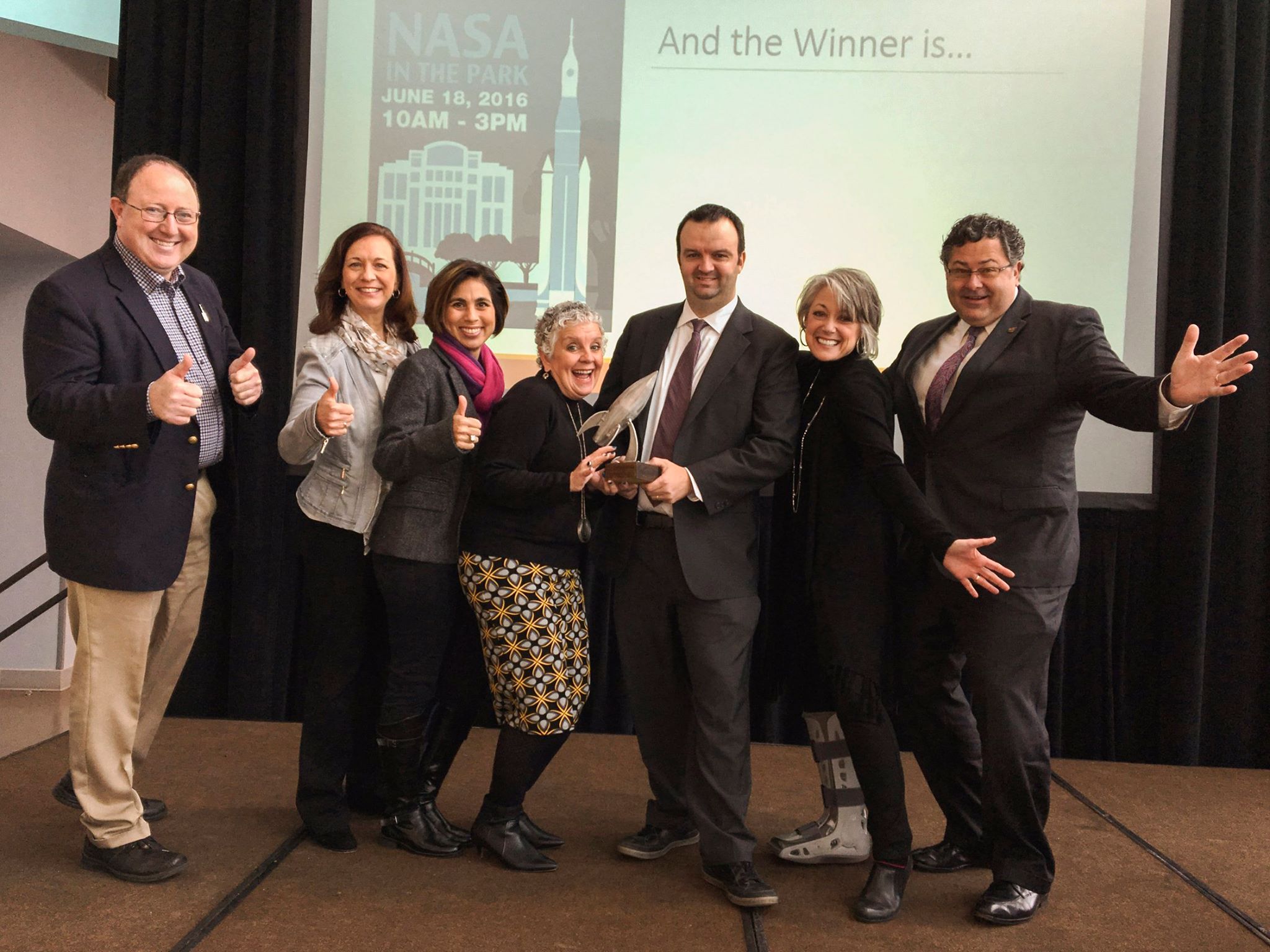
Chad Emerson, president of Downtown Huntsville Inc., left, presents the award for 2016 Event of the Year to officials from NASA’s Marshall Space Flight Center for NASA in the Park. Accepting the award for Marshall are, from second left, June Malone, acting deputy director of Marshall’s Office of Strategic Analysis and Communications; Diana King, program specialist; external relations specialists Sherri Stroud and Daniel Moulton; Marcia Lindstrom, manager of Marshall’s External Relations Office; and Marshall Center Director Todd May. More than 7,000 people attended the third annual celebration of NASA and the community on June 18. The event, held at Huntsville’s Big Spring Park for the first time, featured fun for all ages, live music performed by Marshall team members and a special appearance by NASA astronaut Don Thomas. (NASA/MSFC)
This Week in NASA History: Saturn IB Placed in Marshall Test Stand — Jan. 18, 1965
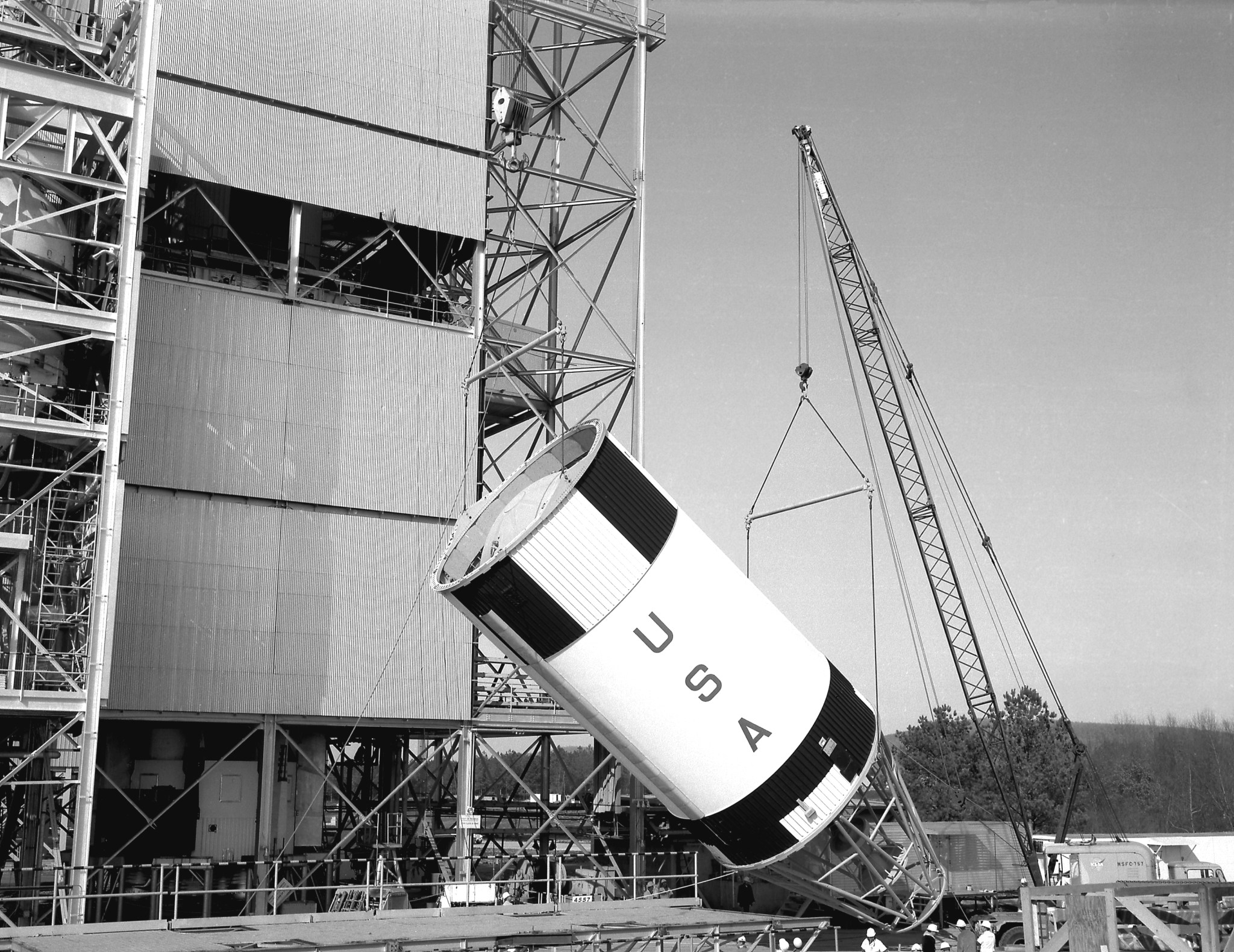
This week in 1965, workers at NASA’s Marshall Space Flight Center hoisted a dynamic test version of the Saturn IB’s second stage into the Dynamic Test Stand as they assembled a complete launch vehicle to test structural soundness. The Saturn IB, which was designed, managed and built at Marshall, launched the Apollo spacecraft into Earth orbit to train for manned flights to the moon. The launch vehicle also carried three separate crews to the Skylab space station and was used for the Apollo-Soyuz Test Project. Today, Marshall is developing NASA’s Space Launch System, the most powerful rocket ever built that will be capable of sending astronauts deeper into space than ever before, including to an asteroid and Mars. The NASA History Program is responsible for generating, disseminating, and preserving NASA’s remarkable history and providing a comprehensive understanding of the institutional, cultural, social, political, economic, technological, and scientific aspects of NASA’s activities in aeronautics and space. For more pictures like this one and to connect to NASA’s history, visit the History Program’s webpage. (NASA)
Obituaries
Wildes M. Hill, 89, of Lacey’s Spring, Alabama, died Dec. 21. He retired from the Marshall Center in 1981 as an electrical engineer.
Sanders R. Stewart Jr., 91, of Huntsville, died Dec. 23. He retired from the Marshall Center in 1980 as a facility and property utilization specialist.
Herbert C. Strandemo, 88, of Decatur, Alabama, died Dec. 27. He retired from the Marshall Center in 1981 as an aerospace engineer. He is survived by his wife, Jean Nolen Strandemo.
Harry M. Johnstone Jr., 92, of Carriere, Mississippi, died Dec. 30. He retired from the Marshall Center in 1979 as an aerospace engineer. He is survived by his wife, Wilda Dimple Johnstone.
James D. Moffitt, 79, of Huntsville, died Jan. 2. He retired from the Marshall Center in 1997 as an aerospace engineer. He is survived by his wife, Joyce Chittam Moffitt.
Leland R. Smith, 83, of Huntsville, died Jan. 6. He retired from the Marshall Center in 1988 as a contract specialist.
James M. Sisson, 81, of Huntsville, died Jan. 14. He retired from the Marshall Center in 1990 as the manager of the Space Station Element Integration Office.









